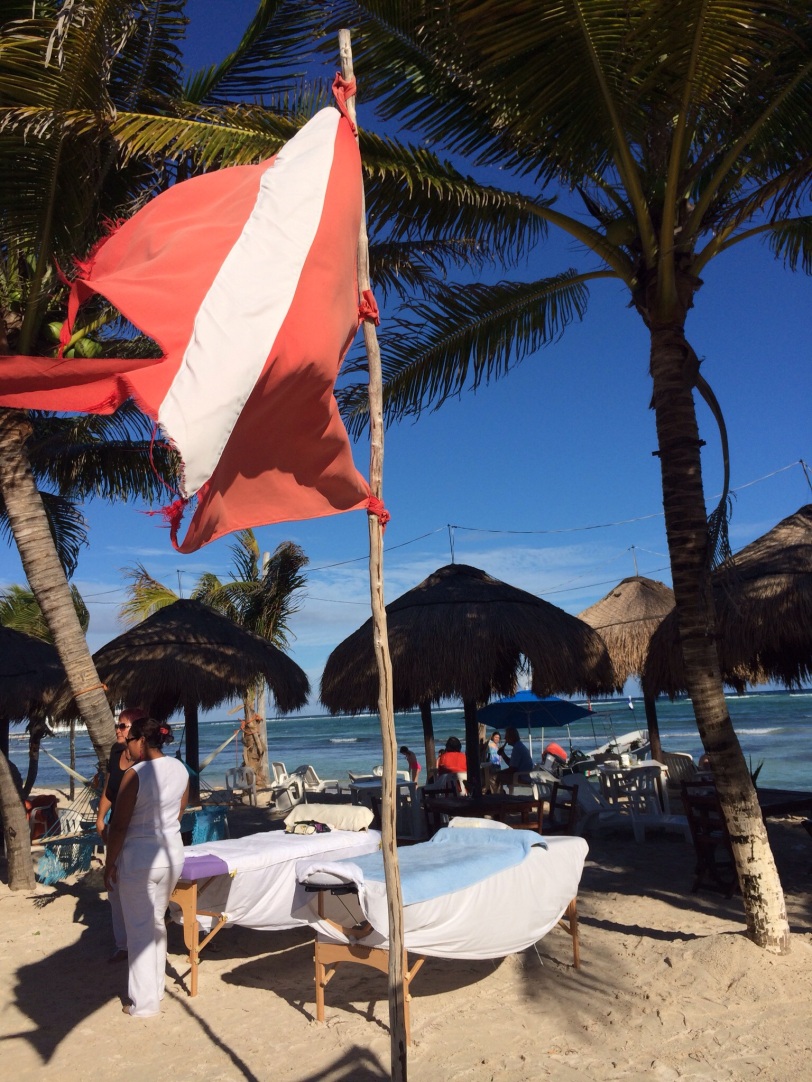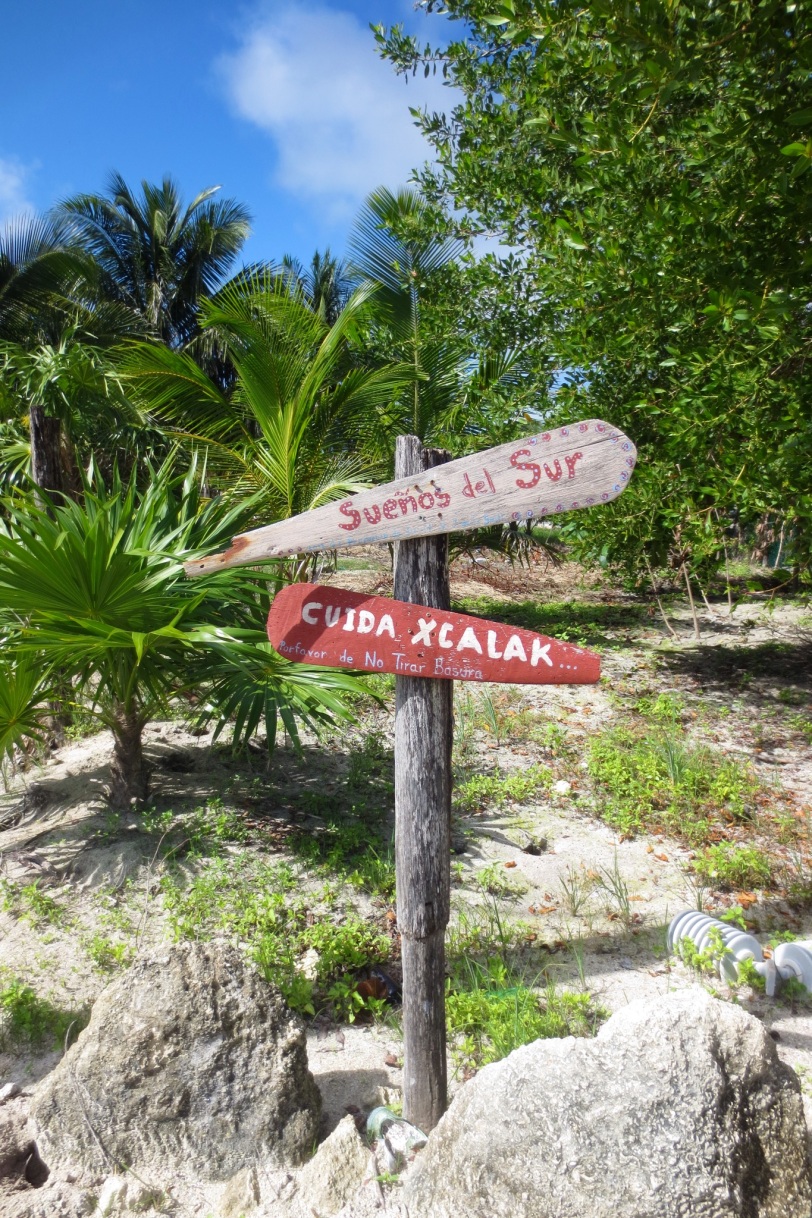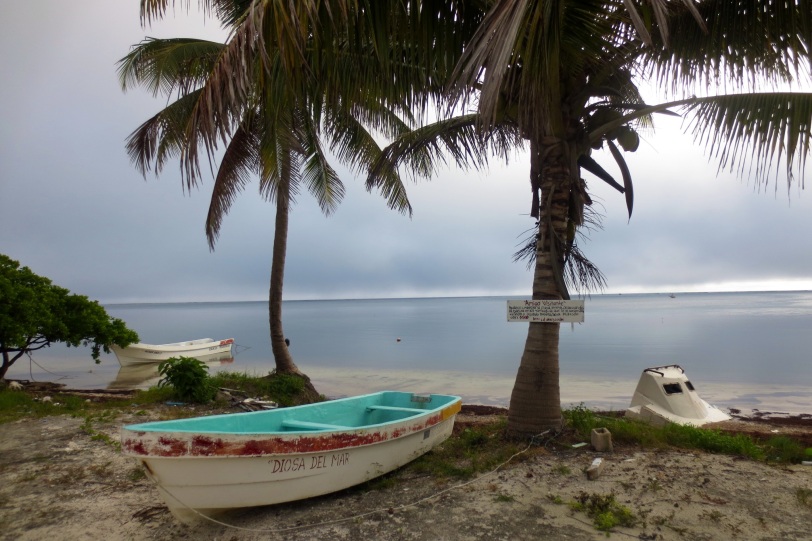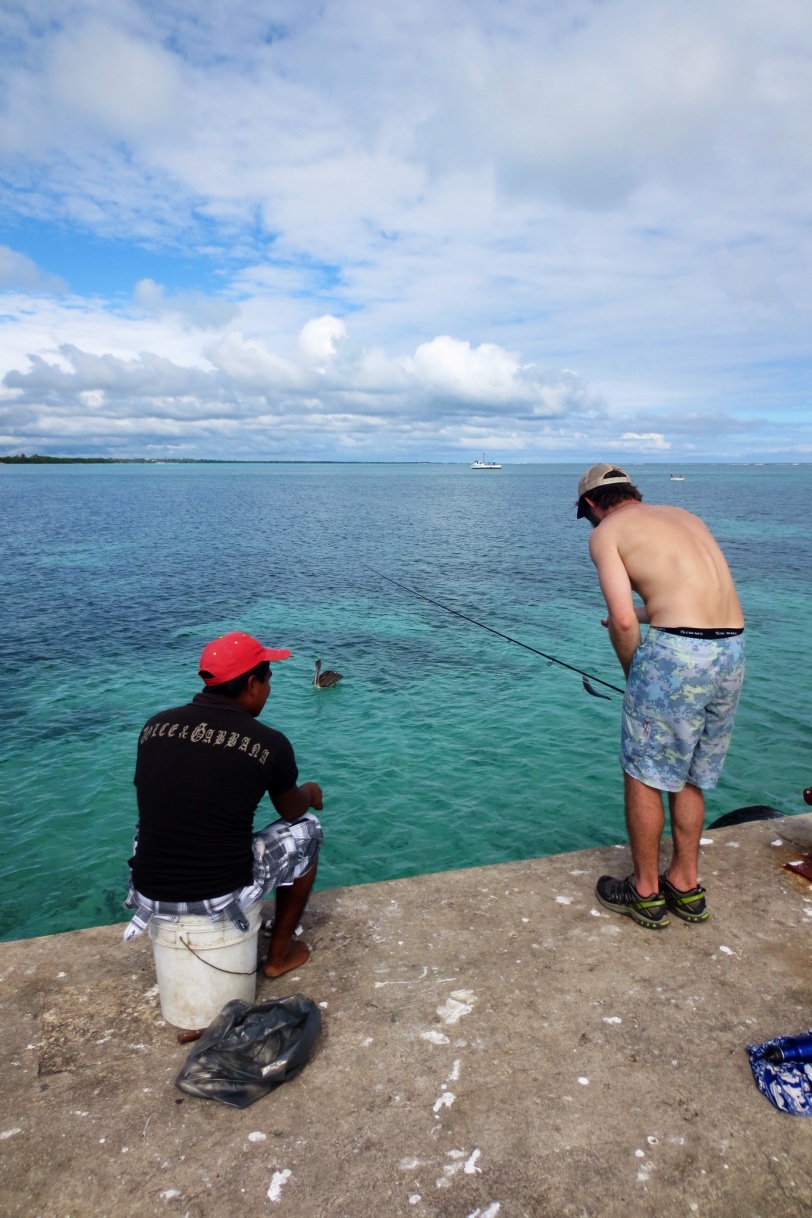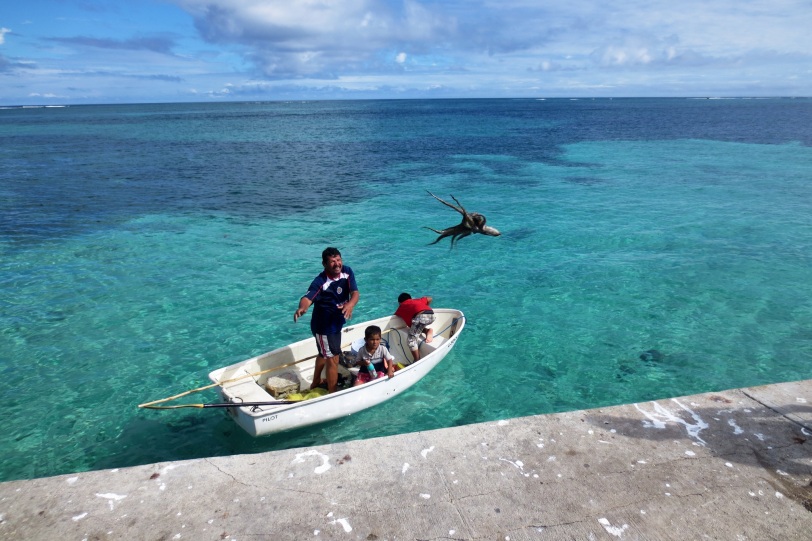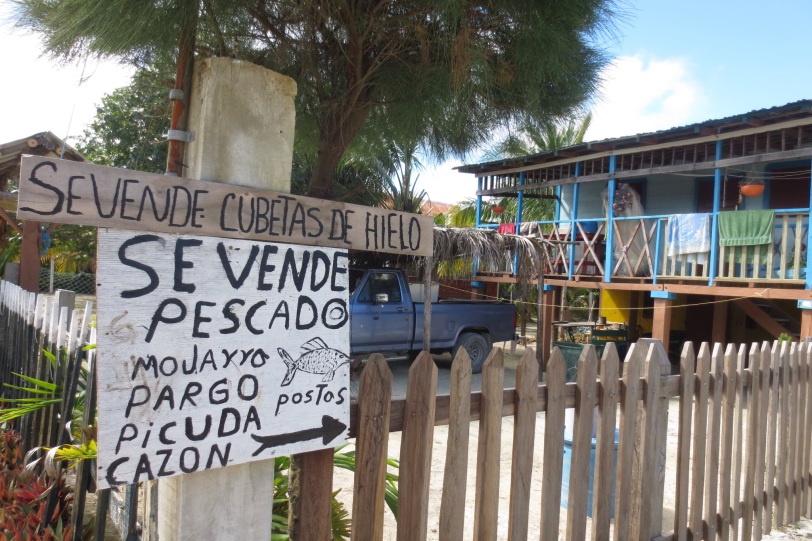From Chichen Itza our adventures brought us back to the coast. Starting in Tulum we slowly travelled by bus, taxi, and collectivo down the Caribbean coast of Mexico until we could go no further: the sleepy almost untouched by tourism fishing village of Xcalak.
The development boom began in Cancun in 1970 and has been slowing migrating south turning small fishing villages into mega tourism destinations over the past 40 years. What Playa del Carmen is now, Cancun was 20 years ago, and what Tulum is now, Playa was 15 years ago. Development is inevitable as long as Mexico continues to profit from tourism. Our goal was to find s spot yet untouched by development.
Skipping over Cancun and Playa, we began the “Costa Maya” section of the trip in Tulum. Tulum is interesting in that the downtown is not on the beach- its a 5km taxi ride away actually! The town gives an impression of having sprung up overnight right on the highway… an impression quite warranted I think. In amongst the tacky tourist shops we found some local gems including the best tacos we tried in Mexico. The beach itself was beautiful, especially at 7 in the morning when no one else was on it. We didn’t go to the ruins since we were pressed for time, and unlike what I had thought, they are not right on the beach but perched atop a rocky cliff.
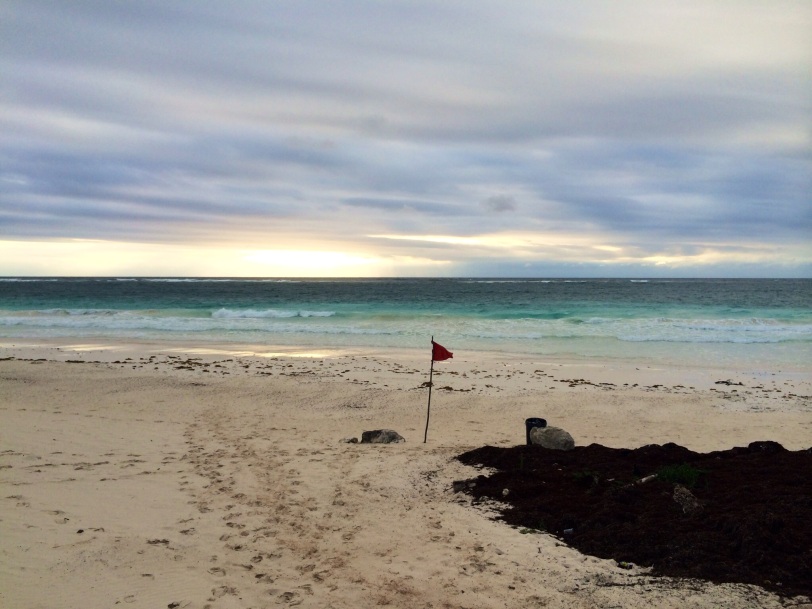

For most Yucatan visitors, Tulum is the furthest south they go. For us, the next town to stop in was Mahahual. Depending on the day Mahahual can be a laidback beach town or it can resemble the Atlantic City boardwalk. The reason why? A cruise ship terminal. Yes, the influx of up to 3 shiploads of cruise ship tourists really does change the nature of the town. On the non-cruiseship days Mahahual was a nice place to relax, snorkel, and enjoy the beach. On cruise ship days we explored more distant places or left town all together and went further south to Xcalak (more on that later). The conveniences of wifi, money exchange, and basic services are what eventually brought us back. It was also in Mahahual that we went SCUBA diving on the nearshore reef. It was okay. For me, the mere fact of diving is awesome, but the reef was pretty degraded and we didn’t see as many fish as I had expected.

Xcalak (esh-ka-lak) is the furthest point you can go on the Mexican Caribbean coast. Joe had heard of it because of the fishing and everything we had heard about it upon arriving in Mexico was right up our alley- no tourists, beautiful, tranquilo- as well as quite a few, “and why would you want to go there? there’s nothing”. perfect. almost. Xcalak is all of those things. It’s a sleepy little fishing village that seems to have fallen on hard times, with hardly any tourism infrastructure in place. Perhaps our expectations were a bit unrealistic. We wanted an authentic Mexico experience off the beaten path, but we also wanted a cheap beachside cabana/bungalow, hammocks, and access to a couple of kayaks. The two just don’t equate. We got the authentic experience, but we got it in a stuffy room with a cockroach, lots of mosquitos, and no kayaks.
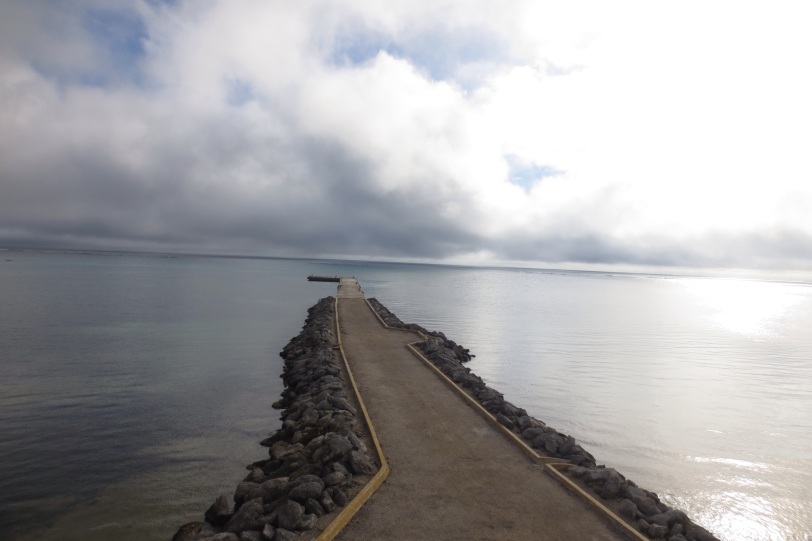
What we also got was snorkeling and fishing off of the pier, great conversations with both locals and expats, beautiful stars, and the knowledge that not everywhere on the costa maya is on the Cancun track. In the end we only stayed one night. However, Xcalak is the one place that I would go back to on the Yucatan, but only on my own terms. What I mean by that is having a vehicle, tent to camp, kayak to explore from, etc.


